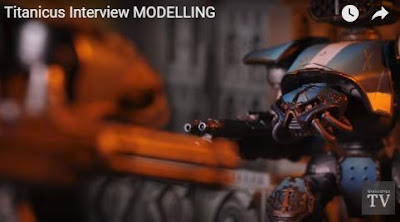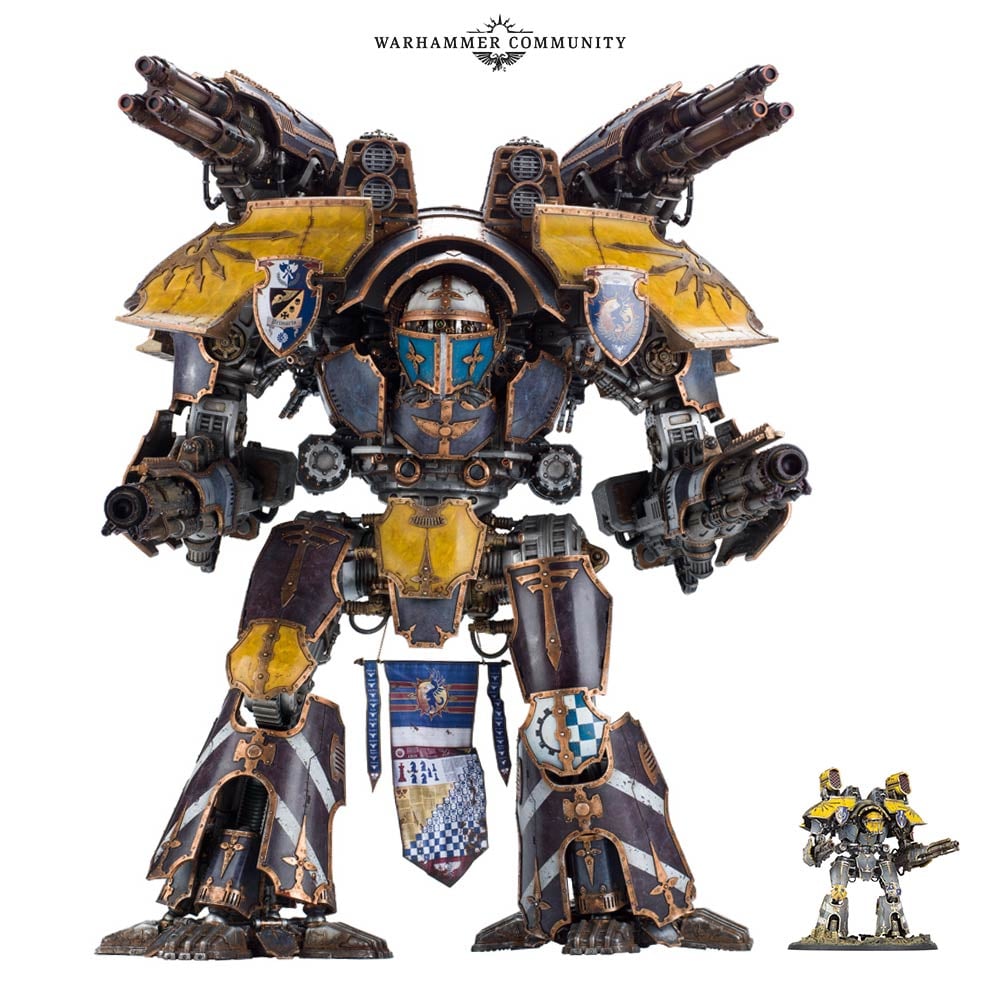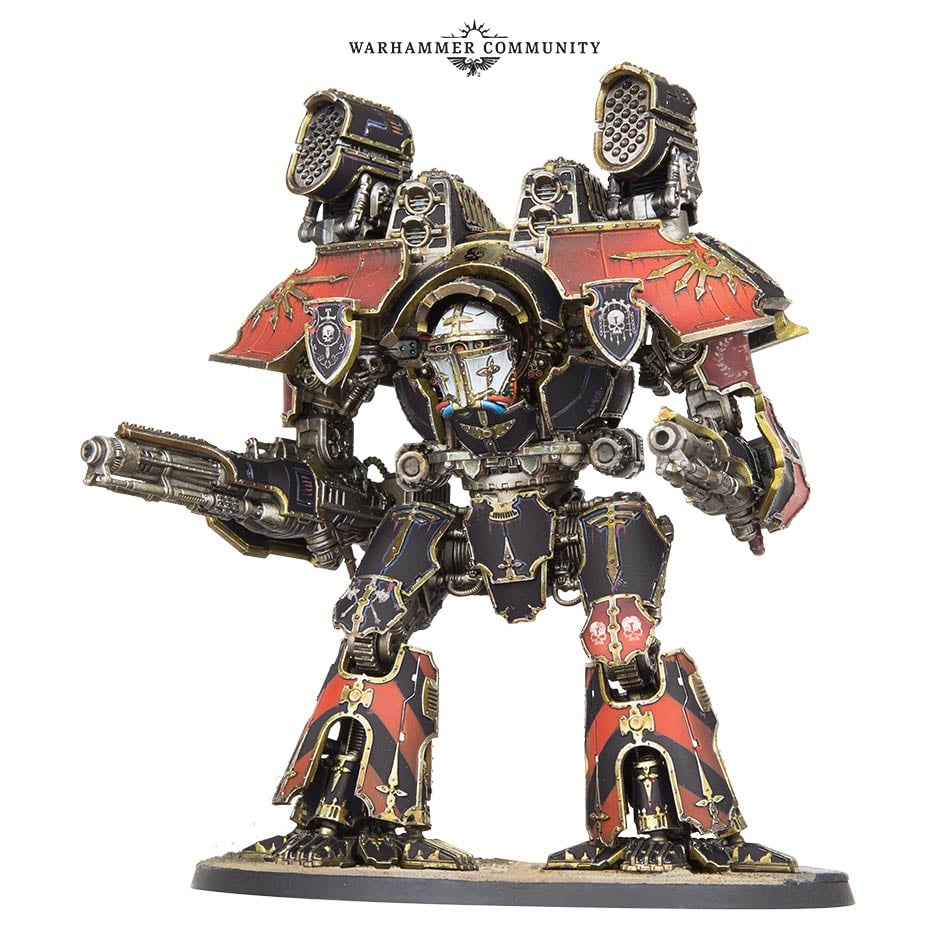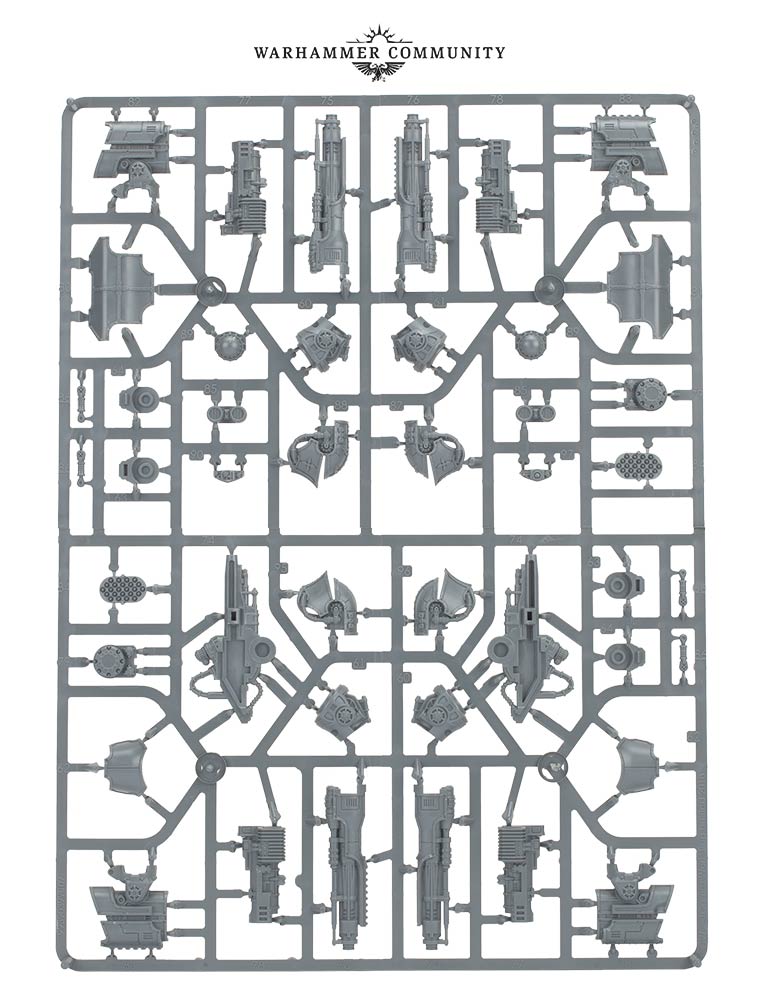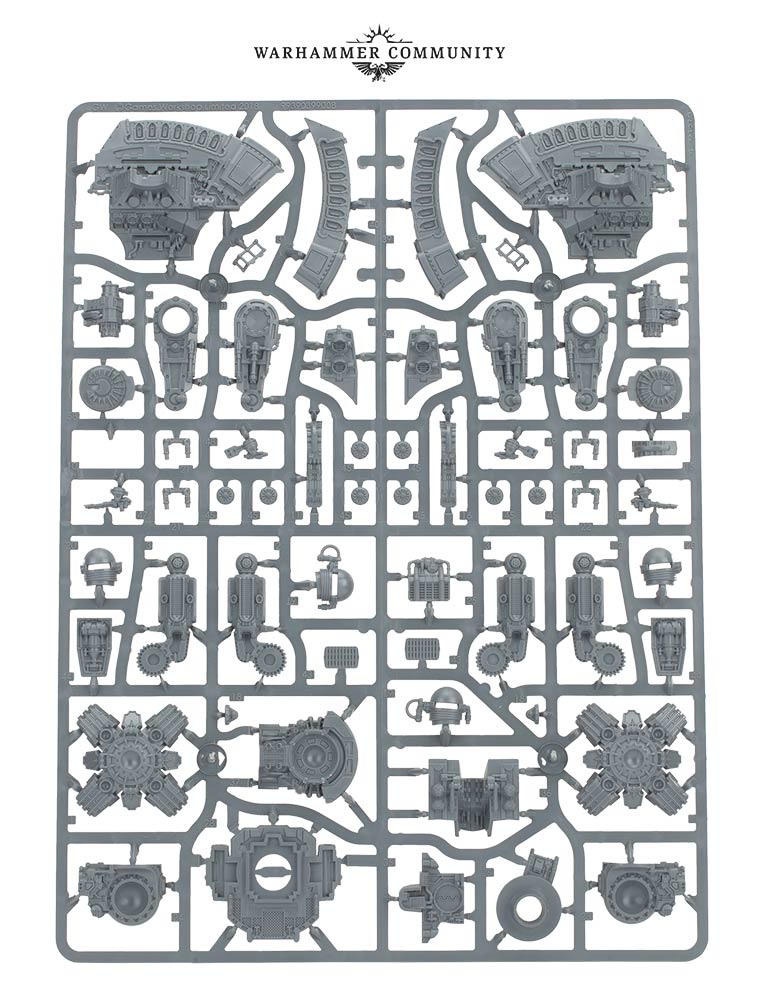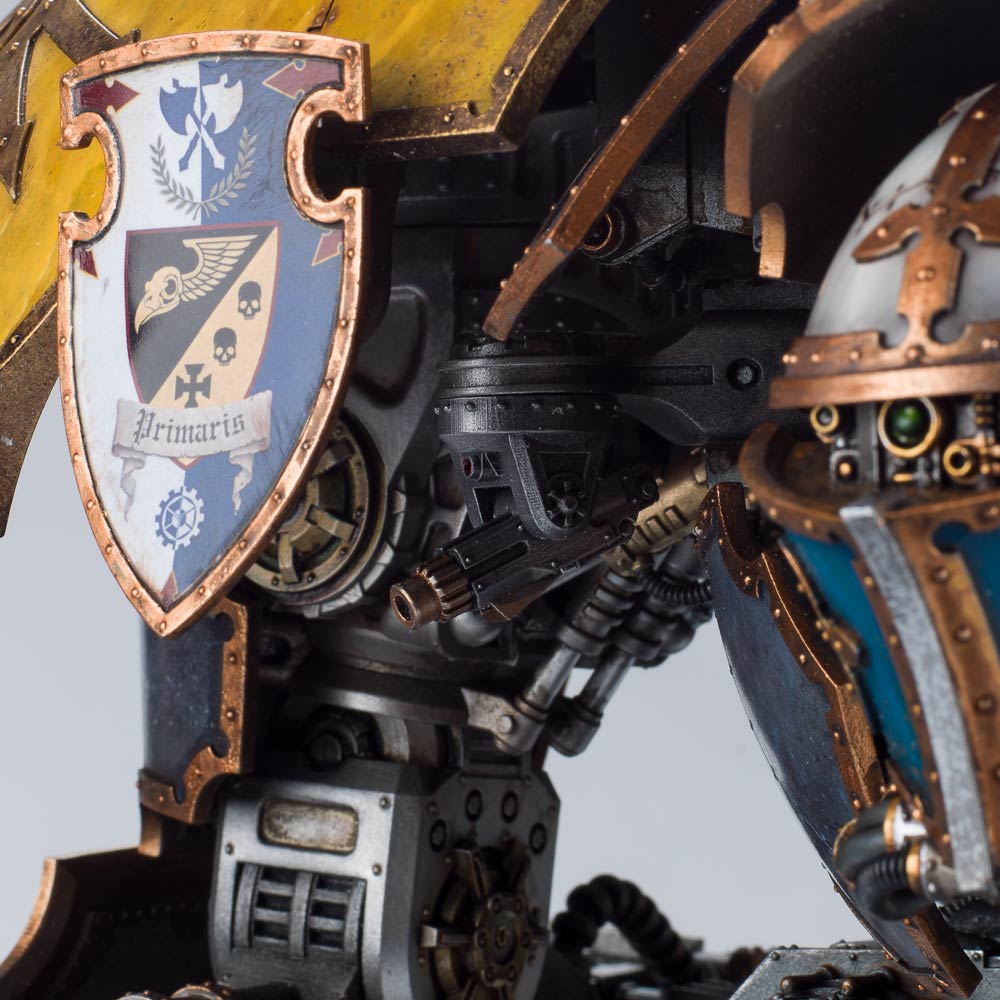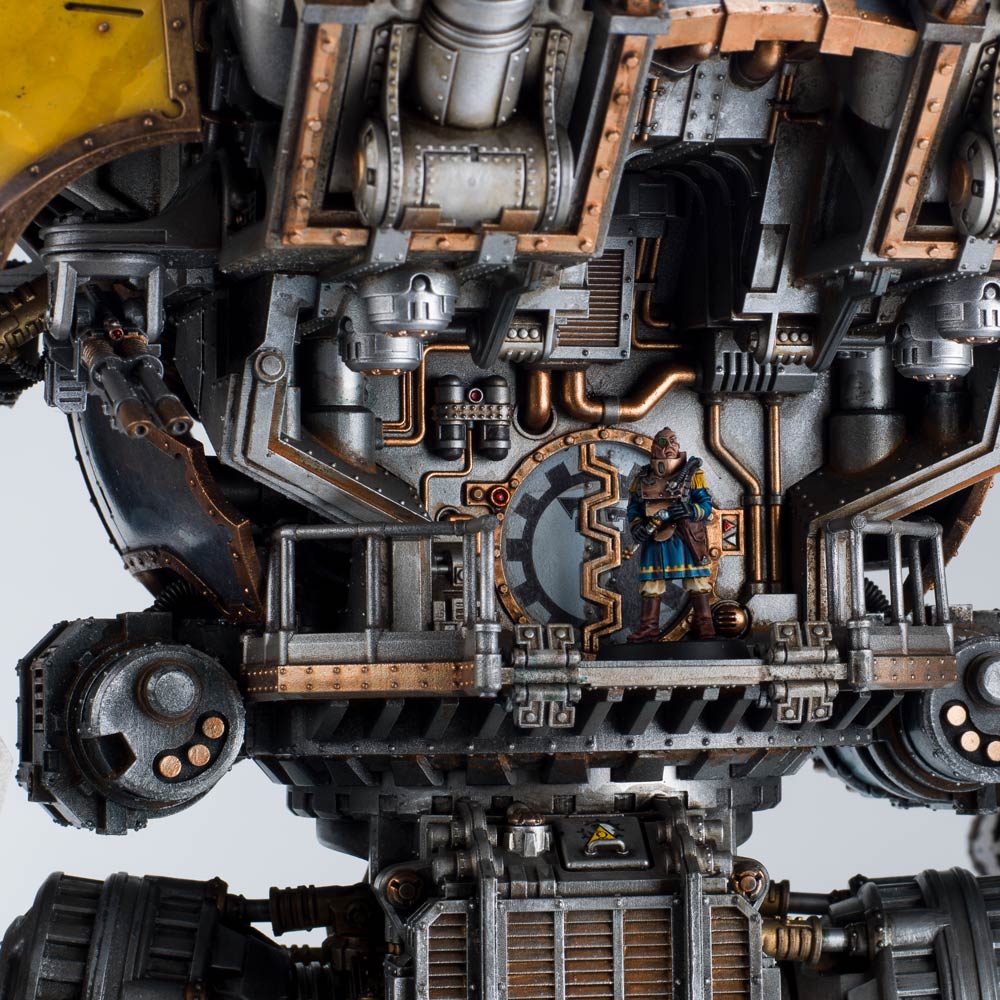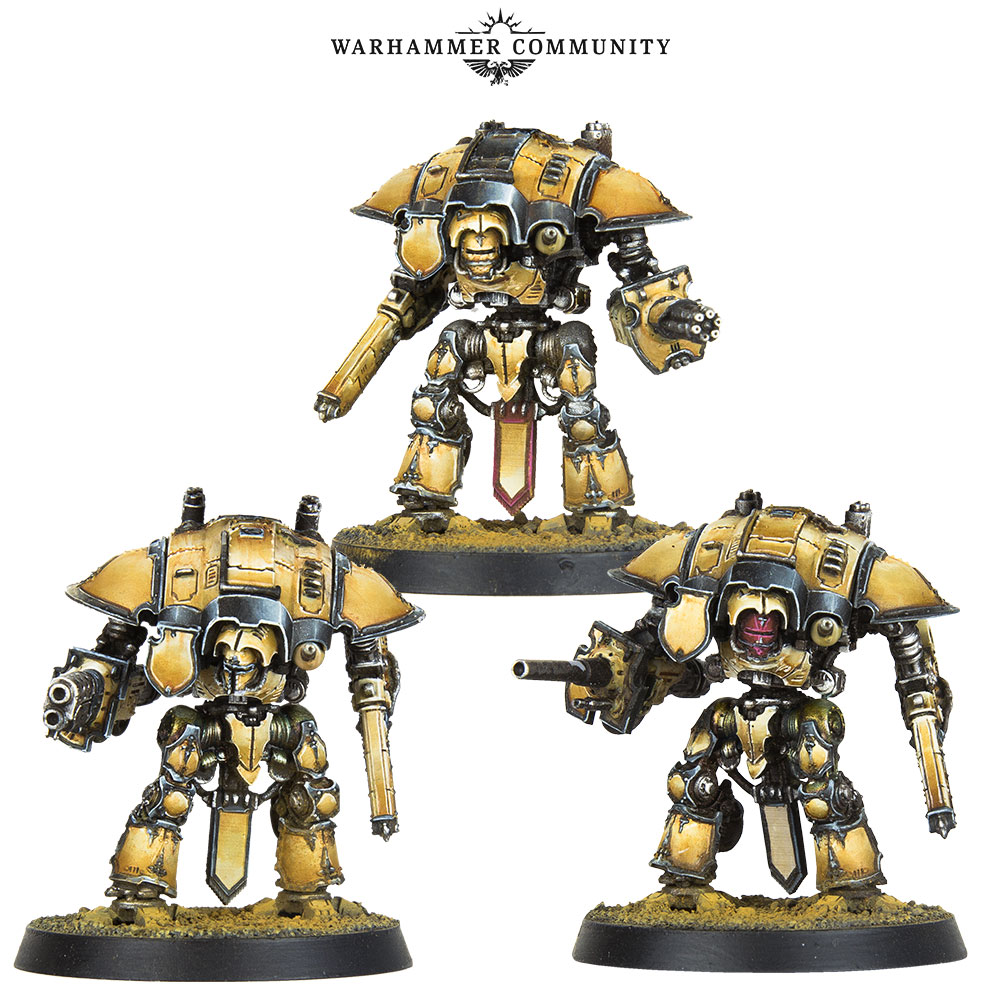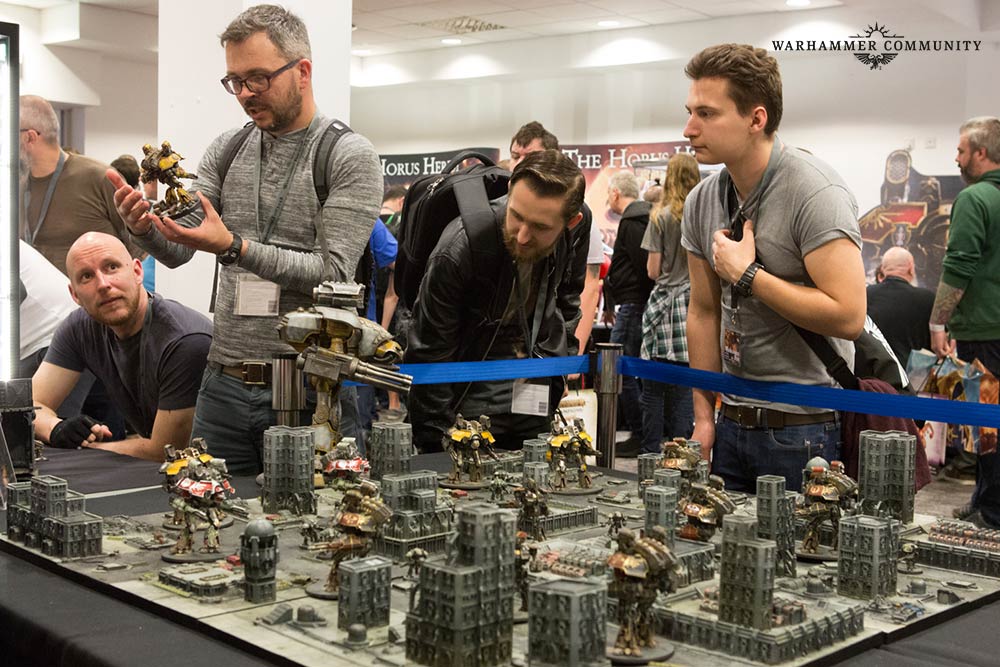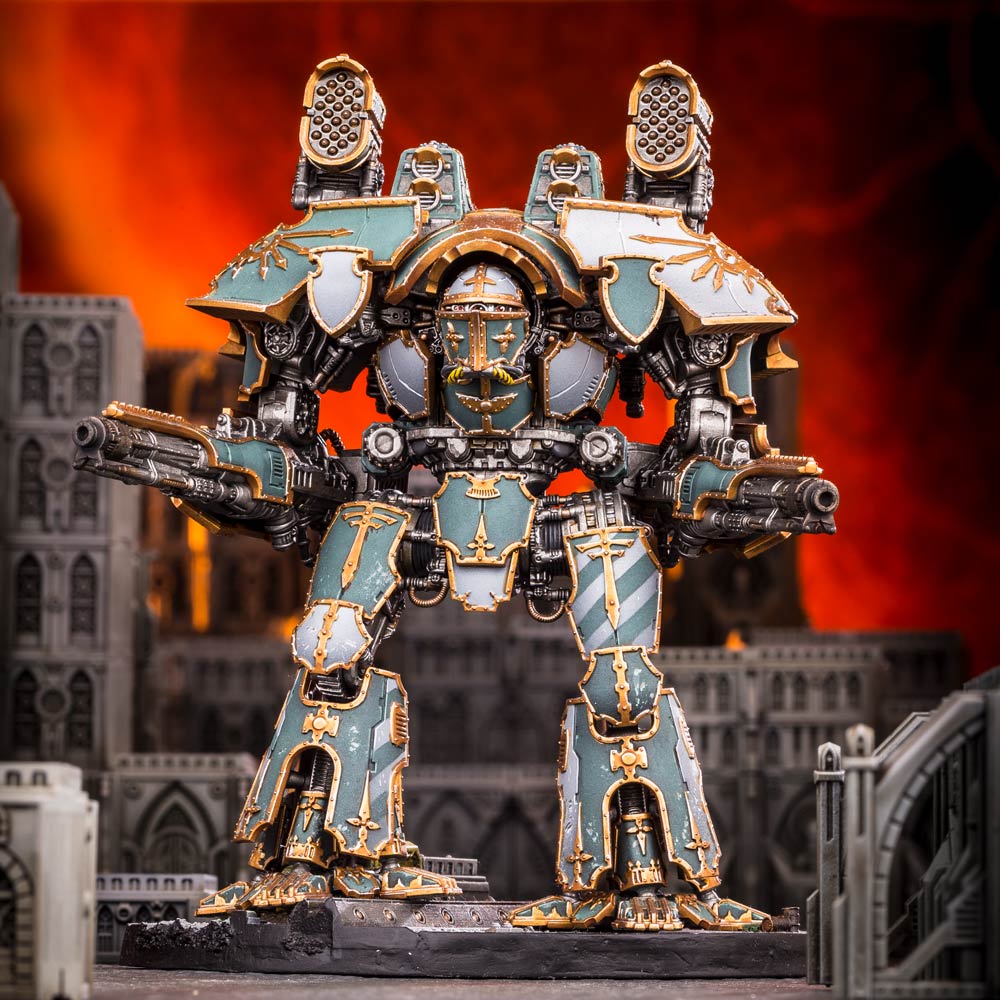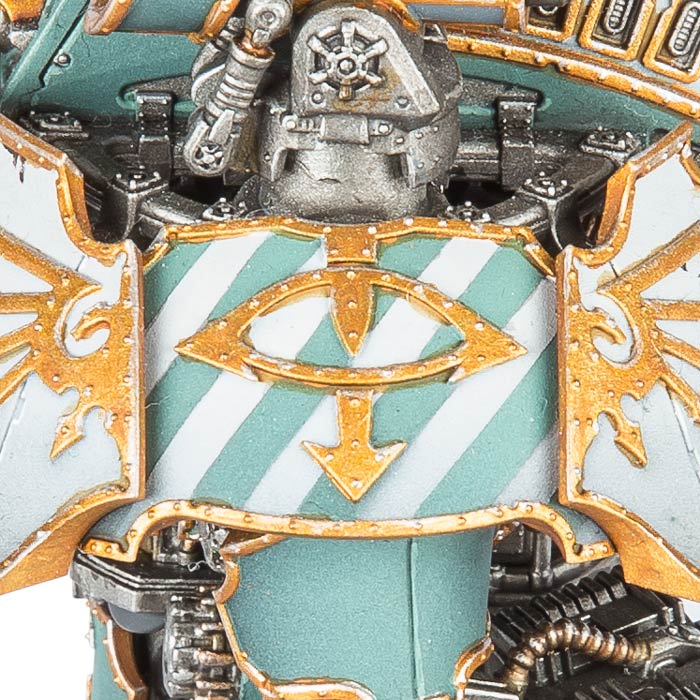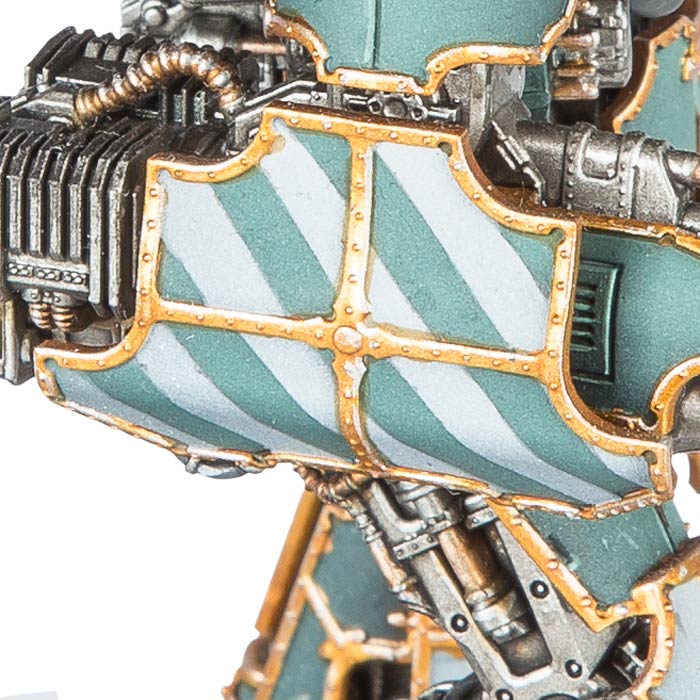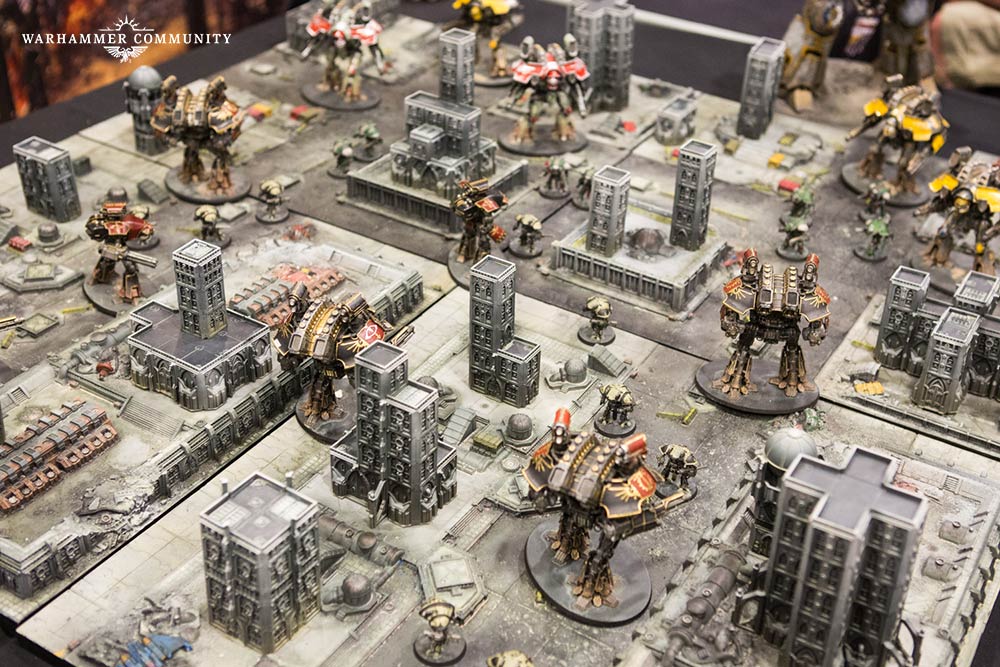Today we get a look at the modelling for Adeptus Titanicus. This is a good look at what went into the miniatures with a good video from the designer.
They talk about what is coming next too... Reaver, Warhound,
Pics from the video of the new upcoming Titans
via the Warhammer Community
https://www.warhammer-community.com/2018/08/08/8th-aug-adeptus-titanicus-war-on-a-new-scalegw-homepage-post-4fw-homepage-post-1/
Adeptus Titanicus is mere days away, and soon, battlegroups of Warlord Titans supported by Questoris Knights will be waging war on tabletops across the world – and we thought it was high time to talk about the game’s astonishing models. Chris Drew from the Specialist Games team is the man responsible for turning the huge Warhammer 40,000 models into their 8mm scale counterparts – and here he is to talk about the process.

Chris: The first step in debigulating* models is the simplest and most obvious – we rescale them. With models that were originally designed digitally, that’s really easy – I have a button for it on my computer! For older Titans, like the Reaver and the Warhound, it takes a bit more work.
These older models needed to be reconstructed digitally in order to rescale and re-engineer them, and though the technology exists to 3D scan the originals, the data isn’t as usable for the rest of the process, so it was quicker and easier to just take the parts, measure them up and rebuild the models digitally.
After that, we had to change the way the models break down and figure out which details to keep and which to leave off, how to engineer them for plastic, and how much we could pack into the sprues. It was a long process and much like doing a 3D jigsaw in reverse (but with a much cooler result).
There were several really important considerations to make during the process that informed how the models were broken down. First among them was that in Adeptus Titanicus, we have sides made up of a handful of nearly identical models, so it was important to build versatility into the kits where possible. With that in mind, the Warlord is almost as poseable as its big Forge World sibling, so if you want five of them, they can all be walking in different ways, tilting differently, aiming differently – not only does this make the models more versatile, but it opens up a lot of modelling opportunities for poses, dioramas and displays, and I’m looking forward to seeing what everyone does with them on release.
The next consideration was to fit the Warlord Titan onto three frames, divided into body, armour and weapons – which means that, in the future, we can easily produce a new set of weapons, or new armour and heads, anything we might want to add to give the customers more modularity. This feature will be replicated on the Reavers and Warhounds as well, allowing for loads of room to grow down the line.

The Warhammer 40,000 Titans are hugely detailed, so we had to be selective about what to keep for the smaller scale models – and keep in mind that some details needed to be enlarged so they could be painted. When choosing details to carry over, I looked at each model and picked the most prominent features to keep or to redesign.
The important details for me in Adeptus Titanicus are the ones that demonstrate scale, that tell us this is an immense war machine and not a Dreadnought. I made sure on the Warlord to keep the railings at the waist, as well as its tiny Ardax Defensor weapons. Even though they’re hard to see on the tabletop, they’ll make the Titan seem, well, titanic. The same is true for the separate heavy stubbers on the Questoris Knights. Simplifying those details, or losing them altogether, would have made my job a lot easier, but the models would have suffered, and we wanted to give people the very best models possible. For many, this will be the only scale of Warlord Titan they ever own – so it was vital that they have as awesome a kit as the full-sized one.
At shows like Warhammer Fest, there is nothing better than hearing people say that none of the detail has been lost on the Warlord Titan or the Knights. It shows that all the detail that we did lose isn’t missed, and all the remaining detail does the job for it.
One of my favourite design features on the Warlord is that both the arm weapons and the carapace weapons are designed with magnet points** so you can easily swap them out between games (the same way the Titan weapons cards are let you do the same in the rules). We’ve carried that through wherever the design of the Titan allows in the range.

With the Warlord Titan, I would recommend leaving the armour panels off and painting them separately, as it allows you to get your brush in and paint the Titan’s skeleton with ease. I assembled the model, but used adhesive putty to attach the armour panels for airbrushing. I then took the panels off and gave the main body a silver spray, highlighted it and washed it before reattaching them – which made the process really easy.
Mark Bedford had to paint a lot of Warlord Titans for the Adeptus Titanicus Warhammer Fest display, and found he could spray most of the armour panels while still on the frame, as most of the armour faces in one direction, while all the gates you snip away are usually either on faces that end up hidden, or on armour banding which is easy to repaint.
Assembling the Knights is pretty straightforward – just remember not to snip out all 3 sets of legs at once, otherwise, it’s harder to match them with their corresponding lower bodies. Beyond that, it might be a good idea to keep the carapace separate for painting – but you can paint it either way.



